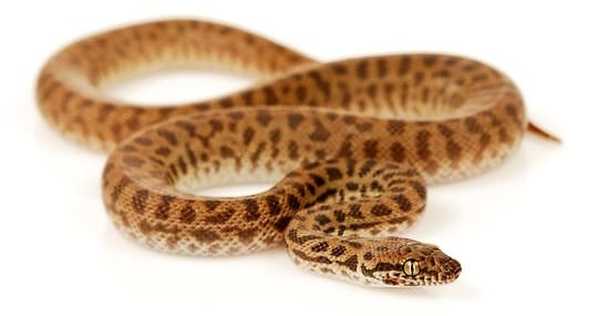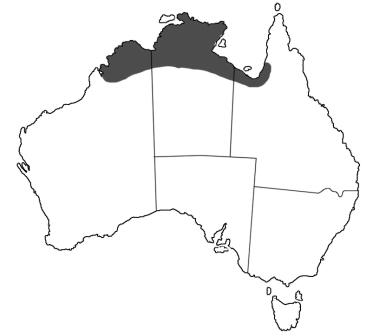Children's PythonAntaresia childreni |

Custom Search
|
These beautiful little pythons are also found on the islands of the Torres Strait. The Children’s python lives in various habitats like savannah and grasslands, scrub, rocky outcrops, monsoon forests and dry woodlands.
These are nocturnal snakes generally found on the ground although it often climbs trees and rock outcrops to find prey. During the day they hide in in termite mounds, caves and crevices. The Children's python is a relatively small python, usually growing to about 3 feet (1 m) in length, and rarely reaching 5 feet (1.5m) still very far from the giant reticulated python (Python reticulatus). The main color is light brown, reddish-brown or beige heavily marked with many roundish darker blotches in 5 or 6 lines along the back, particularly on younger snakes. Unmarked Children’s python specimens do occur in the wild mainly in the Northern Territories. Their scales are small and smooth, and when exposed to direct sunlight they have a rainbow sheen somewhat similar to that of the rainbow boa. The belly is white or creamy in colour. The head is somewhat wedge-shaped and pointed and distinct from the neck, with a darker streak on each side passing through the eyes.
 Children’s python in the wild Children’s python in the wild
The species common name Children’s Python doesn't refer to the fact that these are good pythons for children to keep as pets, but ot John G. Children (see taxonomy).
Although due to their small size and docile nature they are a very popular pet amongst reptile enthusiasts and also suitable for children. Even though they aren't venomous snakes they can still deliver a painful bite, more commonly related with feeding rather than aggression or defensive behavior. The species lifespan in the wild may be up to 20 years with some captive specimens known to have exceed 30 years. Taxonomy / Subspecies The species was first described by John Edward Gray in 1842 as Liasis childreni, and reclassified by Kluge as Antaresia childreni in 1993. The species specific epithet and common name honour Gray's mentor, John G. Children a curator at the British Museum. The Anterisia genus from the family Pythonidae is named after the star Antares, and it now as 4 species. But in the past they were all classified as Children's Pythons including the Spotted Python (A. maculosa), Pygmy python (A. perthensis) and the Stimson's Python (A. stimsoni). There are no subspecies currently recognized for the Children's Python. Diet / Feeding These small pythons feed on a variety of prey including small mammals, reptiles, frogs, rodents, and small birds. One of their favorite prey are small bats commonly found in caves, snatching them out of the air as they fly past them. The Children's Python is not only harmless to people but also very useful since they hunt mice, rats and other pests common around houses, where these snakes are also often found. Lika all pythons they are constrictors, squeezing its prey to death before swallowing it whole. Reproduction The Children's Python is an oviparous snake species, meaning females lay eggs usually in ground nests. The mating season occurs in the spring from May to August, with females laying a clutch of 15 to 25 eggs in summer from September to October. Female of the Children’s python also brood their eggs during the incubation period of about 7 to 15 weeks, by coiling around them and shivering to keep the eggs warm until they hatch This also provides the eggs some protection from natural predators. The hatchlings are about 10 inches (25 cm) long and heavily blotched, but they progressively become brown or reddish brown as they grow. Conservation / Threats The Children's Python has not yet been assessed for the IUCN Red List, but they are one of Australia's most common python species.
|
Scientific classification |
© 2014 Snake Facts About Us | Privacy Policy | Contact




